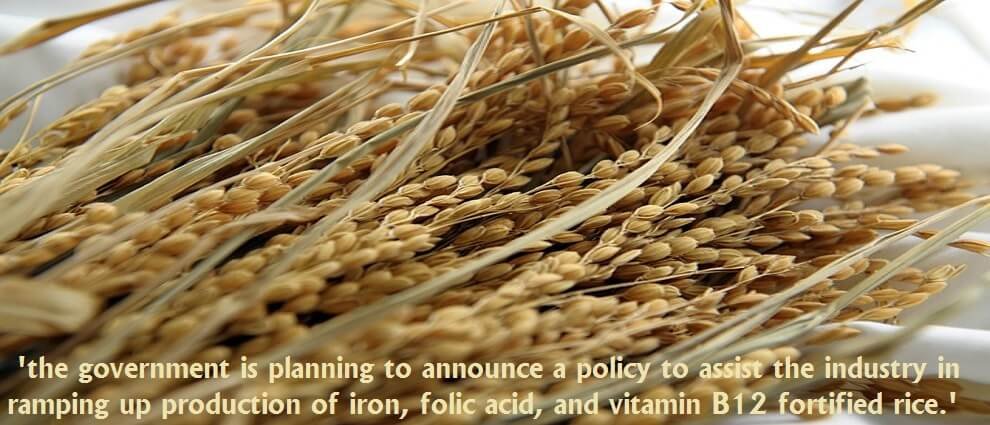Three decades after iodized salt was made mandatory to address dietary deficiencies, India is considering mandating rice fortification beginning in 2024, as a significant portion of the population continues to suffer from malnutrition and anaemia.
According to people familiar with the matter, ‘the government is planning to announce a policy to assist the industry in ramping up production of iron, folic acid, and vitamin B12 fortified rice.’
Also Read: Food tech start-up address genuine problem of farmers in the country
‘The Food Safety and Standards Authority of India (FSSAI) has proposed that India implement mandatory rice fortification beginning in 2024 because there has been no discernible decline in anaemia and malnutrition,’ one of them said. The suggestion was made at a recent high-level meeting.
Rice fortification is estimated to cost ₹ 0.73 per kilogramme. This equates to an additional cost of approximately ₹ 2,655 crore for fortified rice covering the entire government food security plan, which is 1.1 percent of the total annual food subsidy bill of nearly ₹ 2.43 lakh crore for the fiscal year 2022.
Piyush Goyal, the minister of consumer affairs, recently presided over a meeting on the proposal with top officials from stakeholder ministries, including those of health and women and child development.
The meeting was also attended by NITI Aayog CEO Amitabh Kant, as well as think tank members VK Paul and Ramesh Chand, who discussed the progress of an ongoing rice fortification pilot project and the next steps. The government had designated 15 states for the pilot programme. However, only six districts have implemented it so far.
‘The goal is to roll it out in 250 districts, including aspirational and high-burden districts, starting April 1, 2022,’ said the cited source.
Rice is a staple food for 65 percent of India’s population and is an important component of the government’s food security programme. It is distributed at subsidised rates via the Public Distribution System (PDS) and to children via programmes such as the Mid-Day Meal (MDM) scheme and the Integrated Child Development Scheme (ICDS).
Last year, India was ranked 94th out of 107 countries in the Global Hunger Index. According to the Global Nutrition Report for India, the country has made no progress toward its goal of reducing anaemia among women of reproductive age, with 51.4 percent of those aged 15 to 49 affected.
Also Read: India likely to maintain its dominance in global rice market this year as well
Furthermore, 34.7 percent of children under the age of five are still stunted, which is higher than the Asian region average (21.8 percent), while 17.3 percent of children under the age of five are wasting.
This is among the worst in the world and higher than the Asian region’s average of 9.1 percent.


















Add Comment